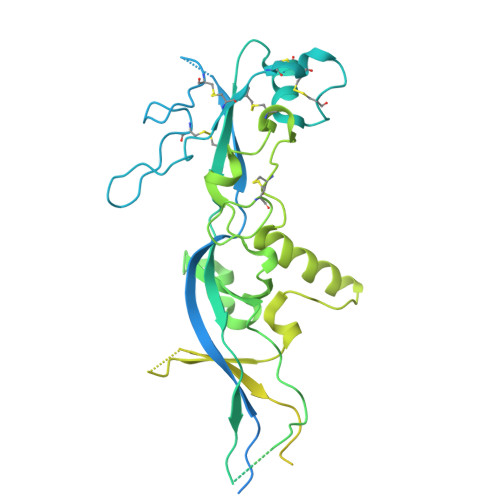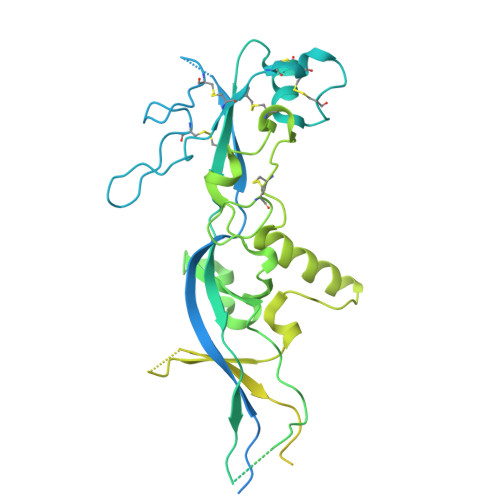Evolutionary diversification of the HAP2 membrane insertion motifs to drive gamete fusion across eukaryotes.
Fedry, J., Forcina, J., Legrand, P., Pehau-Arnaudet, G., Haouz, A., Johnson, M., Rey, F.A., Krey, T.(2018) PLoS Biol 16: e2006357-e2006357
- PubMed: 30102690
- DOI: https://doi.org/10.1371/journal.pbio.2006357
- Primary Citation of Related Structures:
5OW3, 5OW4 - PubMed Abstract:
HAPLESS2 (HAP2) is a broadly conserved, gamete-expressed transmembrane protein that was shown recently to be structurally homologous to viral class II fusion proteins, which initiate fusion with host cells via insertion of fusion loops into the host membrane. However, the functional conformation of the HAP2 fusion loops has remained unknown, as the reported X-ray structure of Chlamydomonas reinhardtii HAP2 lacked this critical region. Here, we report a structure-guided alignment that reveals diversification of the proposed HAP2 fusion loops. Representative crystal structures show that in flowering plants, HAP2 has a single prominent fusion loop projecting an amphipathic helix at its apex, while in trypanosomes, three small nonpolar loops of HAP2 are poised to interact with the target membrane. A detailed structure-function analysis of the Arabidopsis HAP2 amphipathic fusion helix defines key residues that are essential for membrane insertion and for gamete fusion. Our study suggests that HAP2 may have evolved multiple modes of membrane insertion to accommodate the diversity of membrane environments it has encountered during eukaryotic evolution.
Organizational Affiliation:
Unité de Virologie Structurale, Institut Pasteur, Paris, France.


















